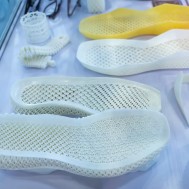Rubber and its related materials dominate the modern industrial space. Flexible, multi-purpose materials like latex, silicone, and thermoplastic elastomers have a huge range of applications in consumer goods. As such, rubber parts are constantly being invented and innovated to meet the high demand for reliable products.
Rubber parts manufacturing has historically relied exclusively on casting and injection molding, but modern advances in 3D printing have given consumer product designers and manufacturers an edge when it comes to designing and prototyping. Read on to learn how 3D printing is improving consumer products in the rubber industry.
Prototyping
Designing a new product, whether it’s intended for mainstream use or for a unique application, was often a much slower process prior to 3D printing.
New products inevitably go through a period of trial and error, and waiting days or weeks for prototypes to be created only lengthens this process. However, 3D printing allows an engineer to take several CAD drawings and turn them into physical models within a few hours (or days, depending on printing speed and complexity). In some cases, 3D printing from a CAD drawing also allows engineers to keep the entire prototyping process in-house.
Essentially, using 3D printing simplifies the prototyping process as a whole, saving time and money while maximizing opportunities for product refinement.
Production
In select cases, 3D printed rubber parts can be used in place of molded rubber parts. This is because 3D printers are able to accurately produce complex designs. Some rubber manufacturers have actually pivoted their entire business model to rely on 3D printing alone. Among the consumer products that can be produced effectively using 3D printing are:
- Grips
- Lids
- Plugs
- Connectors
- Footwear
- Sporting Goods
Small or medium production runs of these products can be turned around in just a few weeks.
Drawbacks and Considerations
Although certain consumer products can be produced using 3D printing, not all materials equate to what is required for industrial applications. In this sector of the rubber industry, 3D printed products are often made as representations of a part, rather than the finished product for use in the final application.
While 3D printing technology is constantly evolving, there are still limitations to the types of materials they can accommodate. This should be a consideration when using this technology, as factors like compression set and resistance to chemical exposure can’t always be accounted for in a 3D printed model. As such, 3D printing is only used on a limited basis in the development and production of rubber parts like gaskets and seals.
While Apple Rubber has been exploring uses for 3D printing in our part design process for several years, our primary focus is on developing our state-of-the-art prototype cutting tools and other in-house capabilities. You can learn more about how Apple Rubber’s in-house prototyping system brings our customer’s designs to life, check out our YouTube video on the process here.
Interested in learning more about 3D printing?
Contact one of our engineers here.
